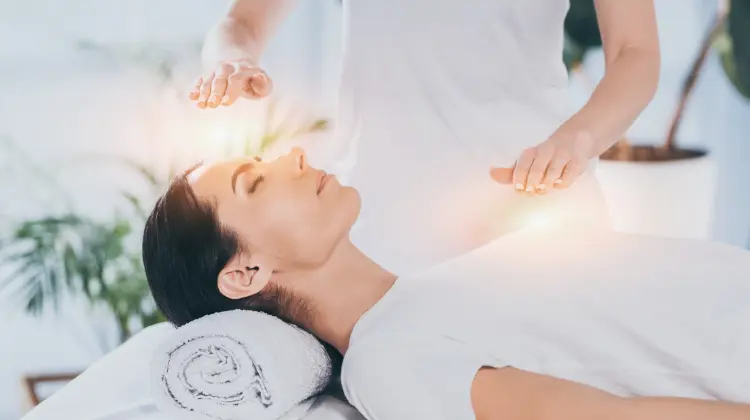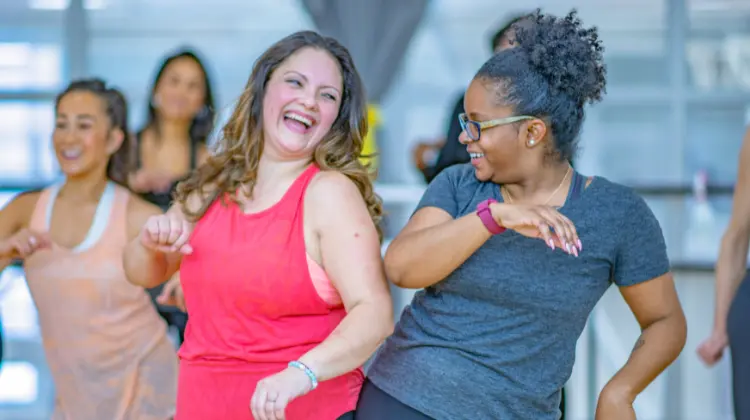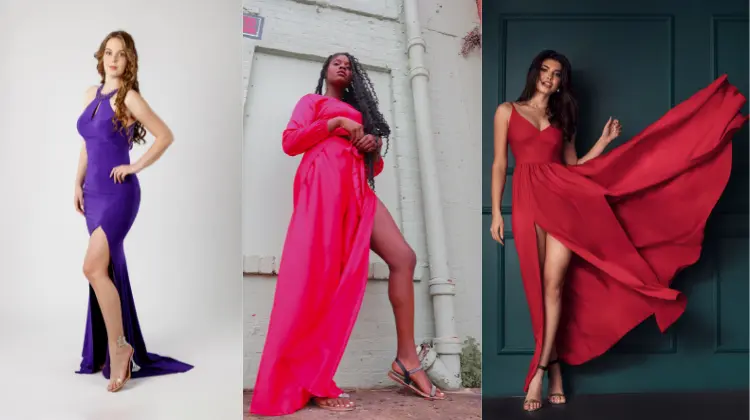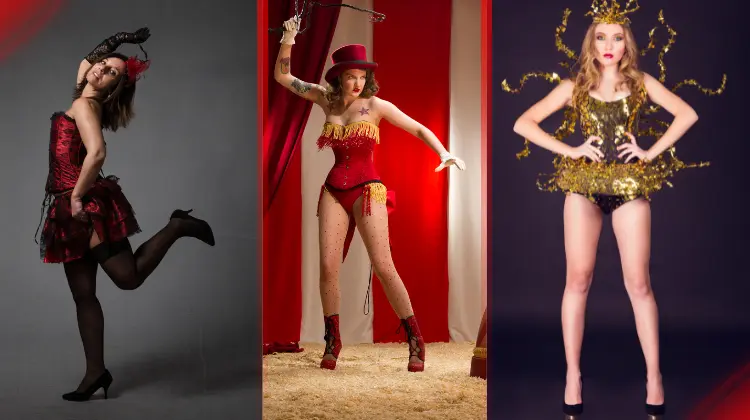What To Wear For Reiki | Beginner Guide
There is much mystery around a Reiki treatment if you have never received one. What to wear for Reiki treatment is a common query. Universal Life Force Energy transfers from Source to the client throughout a Reiki session.

The practitioner’s hands are softly hovering above or resting against the client’s body throughout this energy transfer (never upon the genitals or areas of sensitivity, such as the throat). A client receiving Reiki treatment from me lies fully clothed on a massage table, surrounded by a sheet and a heated blanket for warmth.
What is Reiki?
Reiki is a form of energy healing that originated in Japan. It involves the transfer of energy from the practitioner to the recipient by laying on hands. The practitioner believes this energy transfer can help promote physical, mental, and emotional well-being.
Reiki practitioners use a series of hand positions on or near the body to channel healing energy into the recipient. They may also use visualization and deep breathing techniques to enhance energy flow. Reiki is often described as a relaxing and nurturing experience; some believe it can help reduce stress, improve sleep, and reduce symptoms of certain physical and emotional conditions.
Reiki is not a medical treatment and should not be used as a substitute for medical care. If you are experiencing health problems, it is important to seek the advice of a qualified healthcare professional.
What To Wear For Reiki?
Best Reiki Outfits:

There is no specific dress code or uniform for practising Reiki outfits, as it is not a religion or a formal organization. Practitioners may choose to wear comfortable, loose-fitting clothing that allows them to move freely and comfortably while working with clients. Some practitioners may prefer traditional Japanese attire, such as a kimono or hakama, to honour Reiki’s origins. Others may prefer to wear more casual attire, such as jeans and a t-shirt.
It is important to note that the clothing that a Reiki practitioner wears is not important for the effectiveness of the treatment. Reiki focuses on the transfer of energy and the practitioner’s intention rather than their appearance. Ultimately, the best outfit for a Reiki practitioner is one that allows them to feel comfortable and focused and that does not distract from the treatment.
Reiki outfits wear thin, soft, stretchy fabrics
Wearing comfortable, loose-fitting clothing when practising Reiki or receiving a Reiki treatment. Thin, soft, stretchy fabrics may be particularly comfortable for this purpose, as they allow for a full range of movement and may be more comfortable against the skin.

It is also important to consider the environment in which Reiki will be practised. If the room is warm, lighter-weight fabrics may be more comfortable. If the room is cooler, wear layers or bring a heated blanket or shawl during the treatment.
It is also a good idea to consider the preferences and needs of the client. Some clients may prefer to wear loose-fitting clothing, while others may prefer to wear more form-fitting clothing. It is important to respect the client’s preferences and make them feel comfortable during the treatment.
Flexible and not bulky Waistbands Reiki Outfits
You can wear comfortable, loose-fitting Reiki outfits when practising Reiki or receiving a Reiki treatment. A flexible waistband ensures that the clothing is comfortable and does not restrict movement. A bulky waistband may be more cumbersome and less comfortable during the treatment.
It is also important to consider the material of the waistband. A stretchy waistband made of a soft, flexible material may be more comfortable than a stiff, rigid waistband. Additionally, avoiding clothing with sharp or rough edges is a good idea, as these may be uncomfortable during the treatment.
The practitioner and the client should be able to relax and focus on the treatment rather than being distracted by clothing that is too tight, restrictive, or uncomfortable.
Consider wearing layers or packing a warm and cooler outfit option.
Wearing comfortable, loose-fitting clothing when practising Reiki or receiving a Reiki treatment is the best option. Wearing layers or having a warm and cooler outfit option available can be a good way to ensure that you are comfortable during the treatment, regardless of the room’s temperature or the environment.
A warm outfit option can also be helpful if you tend to get cold easily, as Reiki sessions may involve lying down or sitting still for an extended period.
It is also a good idea to consider the preferences and needs of the client. It is important to be respectful of the client’s preferences and to make them feel comfortable during the treatment.
More fitted clothes help prevent bunching Reiki Outfits
It is also better Reiki outfits to wear comfortable, loose-fitting clothing when practising Reiki or receiving a Reiki treatment. However, it is also important to consider the preferences and needs of the client. Some clients may prefer to wear more fitted clothing, as it can help to prevent bunching or shifting during the treatment.
It may be helpful to have various clothing options available to accommodate different preferences if you are a practitioner.
Ultimately, the most important factor is that the clothing is comfortable and allows for a full range of movement.
Wear clean socks if possible.
Wear Reiki outfits clean, comfortable clothing when practising Reiki or receiving a Reiki treatment. It includes clean socks, as dirty or smelly socks may be distracting or uncomfortable for both the practitioner and the client.
If you are the practitioner, it is also important to consider the preferences and needs of the client. Some clients may prefer to wear socks during the treatment, while others may prefer to go barefoot.
Additionally, it is a good idea to practice good hygiene when practising Reiki, as this can help to create a clean, relaxing environment for both the practitioner and the client. It may include washing your hands before and after the treatment and keeping your clothing and workspace clean and clutter-free.
Take off heavy jewellery and remove items from pockets.
Removing heavy jewellery and items from pockets is generally a good idea before practising Reiki or receiving a Reiki treatment. Heavy jewellery or items in pockets can be distracting or uncomfortable, and they may interfere with the flow of energy during the treatment.
Some clients may prefer to keep certain items with them during the treatment, such as a favourite piece of jewellery or a comfort object.
Additionally, it is a good idea to create a peaceful and uncluttered environment for the treatment. It may involve removing unnecessary items, such as phones, laptops, or other electronic devices, from the treatment space. It can create a more relaxing atmosphere and allow the practitioner and the client to focus fully on the treatment.
Aim for hair that’s flowing-free, with minimal product.
Wear comfortable, loose-fitting clothing to keep the treatment space uncluttered and peaceful. It may involve minimizing hair products or styling aids, as these may be distracting or uncomfortable during the treatment.
Some clients may prefer to have their hair styled in a particular way or have certain preferences about using hair products.
Wear a stretchy bra to Reiki outfits.
There is no specific requirement for the undergarments that should be worn when practising Reiki or receiving a Reiki treatment. However, it is better to wear comfortable, loose-fitting clothing that allows for a full range of movement.
For women, a stretchy bra may be a comfortable choice for Reiki, as it allows for flexibility and support without feeling restrictive. Some women may prefer to wear a different type of bra, such as a sports bra or wireless bra, during the treatment.
It is also a good idea to consider the environment in which Reiki will be practised. If the room is warm, wearing lighter-weight or breathable fabrics may be more comfortable.
Bring a mask or facial covering.
In some situations, it may be advisable to bring a mask or facial covering when practising Reiki or receiving a Reiki treatment. It can help reduce the risk of transmission of respiratory illnesses, such as COVID-19, primarily spread through respiratory droplets.
If you are a practitioner, you must follow local guidelines or regulations regarding using masks or facial coverings in your area. Some jurisdictions may require the use of masks or facial coverings in certain settings, such as during healthcare or wellness treatments. I
f you are the client, check with the practitioner or the treatment facility to see if they have any specific guidelines or recommendations for using masks or facial coverings.
Pack a water bottle.
Reiki is a relaxing and nurturing experience that can help to reduce stress and promote overall well-being. However, it is also important to stay hydrated, especially if the treatment involves physical activity or takes place in a warm environment.
Drinking water before, during, and after the treatment can help to keep the body hydrated and support healthy functioning. It is generally recommended to drink plenty of water throughout the day and to bring a water bottle with you when participating in activities that may cause you to sweat or lose fluids.
Having a water bottle available for yourself and your clients is a good idea if you are a practitioner. It helps ensure that everyone stays hydrated and comfortable during the treatment.
What not to Wear for Reiki?
When practising Reiki or receiving a Reiki treatment,
a few types of clothing may not be suitable for Reiki. These may include:
- Tight or restrictive clothing: Clothing that is too tight or restrictive may be uncomfortable or may interfere with the flow of energy during the treatment. Wear clothing that allows for easy movement and does not constrict the body.
- Heavy or bulky clothing: Clothing that is heavy or bulky may be cumbersome or may interfere with the treatment. Wear lightweight, comfortable clothing that does not distract from the treatment.
- Sharp or rough clothing: Clothing with sharp or rough edges may be uncomfortable or may cause irritation during the treatment. It is generally a good idea to avoid clothing with rough or abrasive surfaces.
Reiki Outfits for Practitioners:
As a Reiki practitioner, wear comfortable, loose-fitting clothing that allows for a full range of movement. It may include soft, flexible fabrics, such as cotton or bamboo, or clothing with a stretchy waistband or flexible closures.
It is also a good idea to consider the preferences and needs of your clients, as well as any local guidelines or regulations.
In terms of specific clothing items, some options for Reiki practitioners may include:
- Yoga pants or leggings: These types of pants are often made of soft, stretchy fabrics and can be comfortable and flexible for Reiki treatments.
- Loose-fitting tops: Tops that are loose-fitting and comfortable, such as tunics or kurtas, can allow for easy movement and may be less distracting during the treatment.
- Kimonos or hakama: These traditional Japanese garments may be worn to honour Reiki’s origins. They are often made of lightweight, comfortable fabrics and can be worn over other clothing.
Reiki Outfits Stretchy, soft, close-fitting shirt (in layers) and pants.
Wearing a stretchy, soft, close-fitting shirt and pants can be a comfortable choice when practising Reiki or receiving a Reiki treatment. Stretchy, soft fabrics allow for flexibility and comfort, while close-fitting clothing helps to prevent bunching or shifting during the treatment.
Wearing layers is also a good idea, as it allows for flexibility in terms of temperature and comfort.
It is important to consider the preferences and needs of the client, as well as any local guidelines or regulations.
A crystal or chakra colours necklace for Reiki Outfits
Some people may wear a crystal or chakra colour necklace as part of their outfit when practising Reiki or receiving a Reiki treatment. Some believe Crystals and chakra colours have certain healing properties or are associated with specific body energy centres.
However, it is important to note that the clothing or accessories worn during Reiki are not believed to be necessary for the effectiveness of the treatment. The focus of Reiki is on the transfer of energy and the practitioner’s intention rather than on specific clothing or accessories.
Supportive shoes for Reiki Outfits
Reiki involves a series of hand positions on or near the body, and the practitioner may need to move around the treatment space during the session. Wearing shoes that provide good support and stability can ensure the practitioner is comfortable and able to move freely during the treatment.
Ultimately, the most important factor is that the practitioner feels comfortable and supported during the treatment and that the shoes do not distract from the treatment.
A soft and stretchy but supportive bra for Reiki Outfits
Wearing a soft, stretchy, supportive bra can be a comfortable choice when practising Reiki or receiving a Reiki treatment. Soft, stretchy fabrics can allow for flexibility and comfort, while a supportive bra can help to provide support and stability.
It is important to consider the preferences and needs of the client. Some clients may prefer to wear a different type of bra during treatment, such as a sports or wireless bra for small breasts. It is important to be respectful of the client’s preferences and to make them feel comfortable during the treatment.
It is also a good idea to consider the environment in which Reiki will be practised. If the room is warm, wearing lighter-weight or breathable fabrics may be more comfortable.
Reiki Outfits, in Sum
Clothing made of soft, flexible fabrics, such as cotton or bamboo, may be particularly comfortable for this purpose.
It is also a good idea to consider the preferences and needs of the client, as well as any local guidelines or regulations.
In terms of specific clothing items, some options may include yoga pants or leggings, loose-fitting tops, kimonos or hakama, and supportive shoes. It is generally a good idea to avoid tight or restrictive clothing, heavy or bulky clothing, and sharp or rough clothing.
Ultimately, the most important factor is that the practitioner and the client can relax and focus on the treatment rather than being distracted by uncomfortable or cumbersome clothing.






